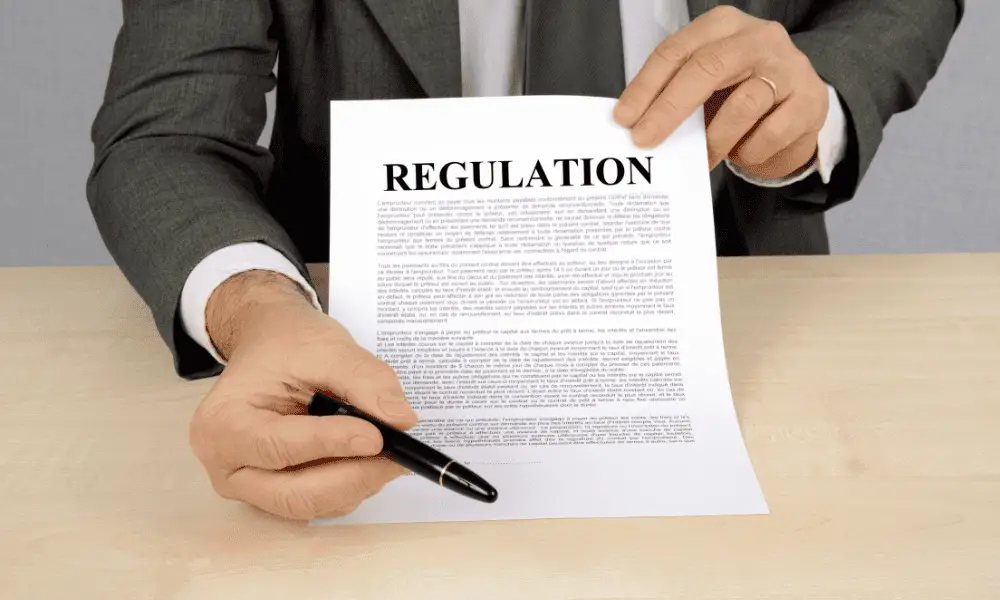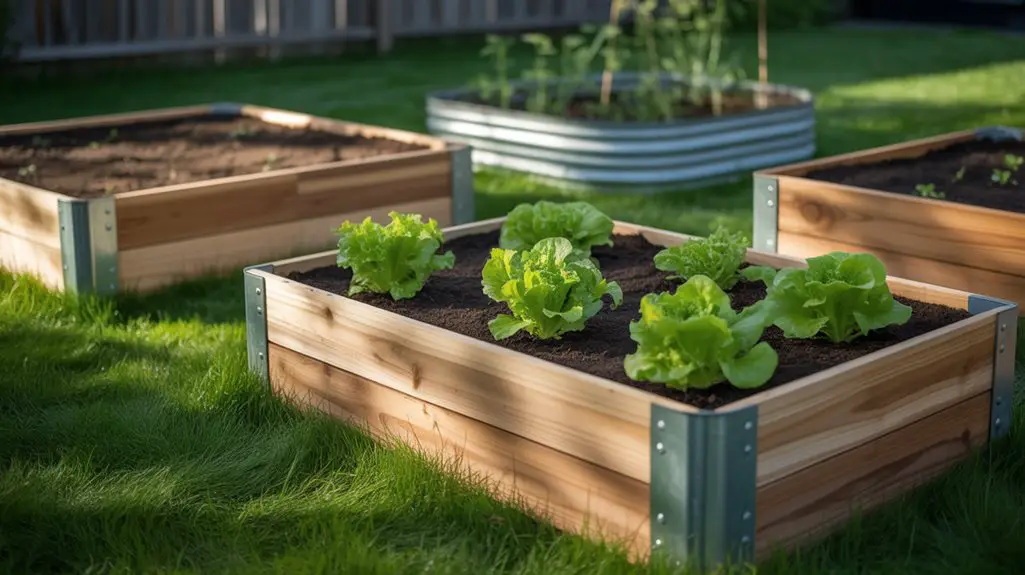Imagine the laughter and joy of children as they run, climb, and swing through a playground you’ve built with your own hands. A place where their imaginations come to life, friendships are formed, and precious memories are made.
But before you dive headfirst into this exciting project, there’s an important question to consider: do you need a permit to build a playground?
Safety is paramount when it comes to constructing a space for children to play in, which is why regulations exist around obtaining permits for such projects. These permits ensure that your playground meets local safety standards and guidelines set forth by governing bodies.
Determining Local Regulations and Requirements

You’ll wanna check with your local authorities, as they hold the key to all the rules and regulations you must follow for your dream playground to come to life. Start by contacting your local inspection department or city planning office.
They will provide you with information about zoning restrictions, safety guidelines, and accessibility requirements specific to your area.
Keep in mind that each municipality may have different rules, so it’s crucial not to assume that what applies in one place will apply everywhere.
In addition to zoning restrictions, there may be other permits or licenses required for building a playground.
For example, some areas might require an environmental impact assessment or approval from a neighborhood association before construction can begin.
It’s also important to consider any potential hazards on the site – such as underground utilities or uneven terrain – that could pose safety risks during construction and ongoing use of the playground.
Your local inspection department can help guide you through these considerations and ensure your project complies with all relevant safety regulations.
By taking the time to learn about and adhere to local regulations, you’re not only ensuring the safety of everyone who will enjoy your playground but also preventing potential legal issues down the road.
Remember that compliance is essential in creating a space where children can safely explore, play, and grow without worry.
Reach out early on in the planning process so you can make well-informed decisions throughout every stage of development – after all, it’s better to be safe than sorry when it comes to our little ones’ well-being!
Reasons for Permit Regulations

It’s important to understand that permit regulations exist for safety reasons, ensuring that playgrounds are built according to proper standards and guidelines.
By adhering to these regulations, you can help create a safe environment for children and families in your community.
Permit importance not only lies in making sure the playground is structurally sound but also in fostering community involvement where everyone’s voice is heard and taken into consideration.
Some key aspects of permit regulations include:
By obtaining a permit for your playground project, you’re showing your commitment to providing a safe space for children of all abilities to play and learn together.
Not only does this protect your investment by ensuring it meets necessary guidelines, but it also fosters a sense of pride among community members who participated in its creation.
So, take advantage of available resources like local government offices or online resources when planning your playground project, and remember how critical permits are in safeguarding our most precious resource – our children!
Steps to Obtain a Playground Permit

Ready to create that dream playground for your community?
Let’s dive into the steps you’ll need to take to obtain a permit and make it a reality!
First and foremost, research your local government’s requirements for building a playground. This may include visiting their website or contacting the appropriate department directly.
Keep in mind that regulations can vary between cities and states, so be sure to gather accurate information specific to your area.
Additionally, consider seeking out playground funding opportunities through grants or sponsorships, which can help cover the costs of building materials, installation, and even ongoing maintenance.
Next up is designing an inclusive and accessible play space that meets all safety standards. Accessible designs ensure that children of all abilities can enjoy the playground together.
Consult with professionals who specialize in creating safe and accessible play spaces, as they will have invaluable expertise on proper equipment placement, surfacing materials, and overall layout.
Don’t forget about incorporating elements like ramps, handrails, transfer platforms, or sensory play areas designed specifically for individuals with mobility impairments or other disabilities.
Once you’ve researched local regulations and created an inclusive design plan, it’s time to submit your application for a permit.
Be prepared to provide detailed documentation, including site plans showing the exact dimensions of the proposed play space; descriptions of each piece of equipment; details of safety features such as fencing; proof of compliance with accessibility guidelines; any necessary permits/approvals from other agencies; estimated timeline for completion; and evidence that you’ve secured sufficient funding.
Remember: patience is key during this process! It could take several weeks – or even months – before receiving approval from your local government agency depending on how busy they are with other applications at the time.
Once approved, though, get ready to break ground on making your dream playground come true!
Consequences of Ignoring Permit Rules

Imagine the disappointment and potential legal trouble that could arise if, after all your hard work, you bypass those crucial permit rules for your community playground project.
Unauthorized construction can result in a variety of consequences, some of which may be long-lasting and far-reaching.
It’s important to understand the possible ramifications of ignoring permit rules before diving into any playground construction project.
- Fines and penalties: Depending on your local government’s regulations, permit penalties for unauthorized construction can range from hefty fines to even more severe actions like a lien being placed on your property. These financial burdens can quickly add up, putting unnecessary strain on your budget and potentially causing delays in completing the project.
- Forced removal or modifications: If local officials discover that you’ve built without proper permits, they may require that you remove the entire structure or make significant changes to bring it into compliance with safety codes and regulations. This could mean tearing down all or part of the playground and starting over—a costly proposition both financially and emotionally.
- Liability issues: Building without a permit can expose you to significant legal liability should an accident occur at the playground site. Without proper permits in place, insurance coverage may not apply—leaving you responsible for medical bills, damages or even facing potential lawsuits.
- Loss of community support: When word gets out about unauthorized construction activities, people in your area may begin to question the integrity of both your leadership team and the project as a whole—potentially leading to loss of funding sources or volunteers critical for successful completion.
It’s clear that obtaining proper permits is vital for any playground project—not only because it ensures compliance with safety standards but also because it protects against negative consequences stemming from unauthorized construction efforts.
By following established guidelines during every phase of planning through execution, you’ll help ensure that everyone involved can enjoy their new play space safely—and without fear of unexpected pitfalls lurking around the corner due to overlooked permit requirements!
Ensuring Safety and Compliance in Playground Construction

Taking the time to prioritize safety and compliance throughout your playground construction project is essential. It’ll not only protect your community’s children but also safeguard against potential legal and financial consequences.
To ensure that your playground meets all required standards, start by researching local regulations and guidelines on permits, material selection, and design specifications.
Additionally, consider engaging with a certified playground safety inspector (CPSI) early in the process to review your plans and provide expert guidance.
One crucial aspect of building a safe playground is selecting appropriate materials for various components, such as play equipment, surfacing materials, and fencing.
Material selection should take into account factors like durability, weather resistance, accessibility requirements, and potential hazards. For instance, opt for materials that are free from toxic substances or sharp edges to minimize risks for children.
Moreover, pay attention to proper installation techniques that will ensure the stability of structures within the playground.
Regular playground inspections are vital during construction as well as post-completion to maintain safety standards throughout the life of the facility. These inspections can identify potential hazards or defects in equipment before they pose a risk to users.
Engaging with CPSIs or other trained professionals can help you stay informed about any changes in guidelines or regulations over time while keeping an eye on wear-and-tear in your playground elements.
By staying proactive with inspections and maintenance checks, you’ll be able to create a safe environment where children can enjoy their playtime without worry.
Ultimately fulfilling your responsibility towards providing them with a secure space for fun-filled experiences.
Conclusion
In the end, don’t play Russian roulette with playground regulations. Knowing when a permit is needed and following local guidelines keeps everyone in your community safe and sound.
No one wants to be responsible for turning a child’s laughter into tears. So go on, take that extra leap of faith, and ensure your playground project is built with safety and compliance in mind.
After all, creating a space where memories are made should be nothing short of smooth sailing.




